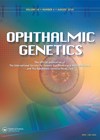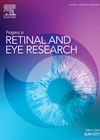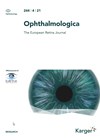
Journal Reviews
A practical approach to uveitis screening in children with juvenile idiopathic arthritis
The multinational Interdisciplinary Working Group for Uveitis in Children consists of 10 paediatric rheumatologists and five paediatric ophthalmologists with expertise in paediatric uveitis. They identified a simplified screening recommendation to enable local eyecare professionals (ECPs) to screen children with juvenile...
How does a tablet based stereoacuity test perform in children with normal and abnormal visual acuity?
The authors present a prospective cross-sectional comparison study at a single centre. Paediatric patients attending an ophthalmology outpatient clinic and likely to be cooperative were approached to participate. Participants underwent stereoacuity assessment using the ASTEROID and Titmus tests, usually in...
Ethnic disparities in diagnostic sequencing yield
The authors present a systematic review and meta-analysis of the diagnostic yield of next generation sequencing (NGS) for inherited retinal diseases and compare yield from studies performed primarily on patients of European descent from those primarily of East Asian descent....
Treatment of anisometropia and strabismus amblyopia with syntonic phototherapy
Syntonic phototherapy is a non-invasive light therapy treatment using specific light colours, frequency and wavelength to improve body regulatory centres in the brain. It is proposed that red light increases cell membrane capacitance buildup of electrical charge before discharge that...
Short-term instability of surgical correction of IXT
In this retrospective observation study from southern India, the authors aimed to evaluate the progression of intermittent exotropia (IXT) following surgical correction and its contributing factors in 50 patients. Mean age at surgery was 10 years (range 6–14), 26 were...
Comparison of two surgical procedure options for unilateral superior oblique palsy
This study compares two surgical options for management of unilateral superior oblique palsy with angles >20PD. Group 1 underwent one vertical muscle surgery – ipsilateral inferior oblique anterior transposition plus resection (IOATR). Group 2 underwent two vertical muscles surgery –...
Strabismus prevalence in a Pakistan population
The aim of this study was to compile the available literature reporting the prevalence of strabismus in Pakistan and calculate the pooled prevalence of strabismus in the Pakistan population. Meta analysis was conducted with 10 studies with a total of...
Let the eye be the window to your body
The authors offer a comprehensive overview of how the eye provides novel insights into systemic health. The interplay between the eye and body has given rise to the field of oculomics – the application of ophthalmic biomarkers to understand mechanisms,...
Nystagmus in infants (0–1 year)
This article from a tertiary hospital in Jerusalem documents the examination and investigations of 147 infants aged 0–1 years with nystagmus. The most common pathologies were albinism (59%) and inherited retinal dystrophy (IRD) (21%). They had eight patients with vertical...
Changes in ocular biomarkers in Vogt-Koyanagi-Harada disease after pulse steroid therapy
This retrospective study aimed to evaluate the early and chronological changes in ocular biomarkers in patients of Vogt Koyanagi Harada (VKH) disease who received pulse steroid therapy. It further aimed to identify which biomarkers correlated with the best corrected visual...
Anti-VEGF agents treatment outcomes in macular telangiectasia
This article is a review of a systematic literature search on Ovid MEDLINE, Embase, and Cochrane Library, from inception to June 2024 for comparative studies on anti-VEGF agents in macular telangiectasia (MacTel). The primary outcome was the change in best-corrected...
Which cover test method is the best starting point for prescribing temporary prisms?
A retrospective review of medical records was completed, identifying consecutive patients prescribed Fresnel prisms for diplopia, assessed using both simultaneous prism and cover test (SPCT) and prism and alternate cover test (PACT) by a single orthoptist over a 36-month period....











